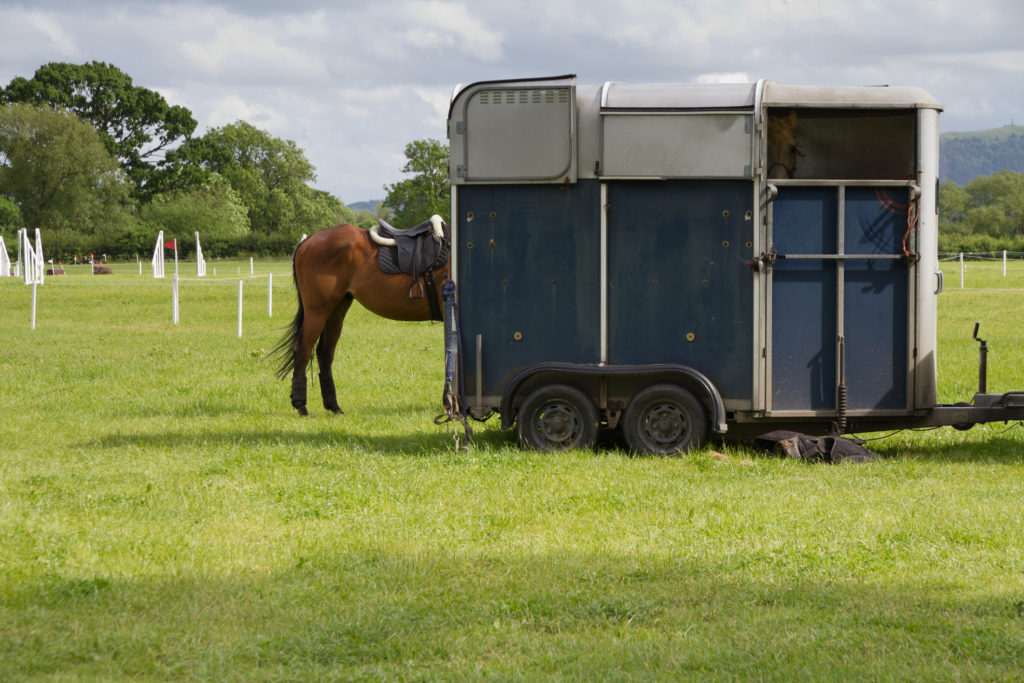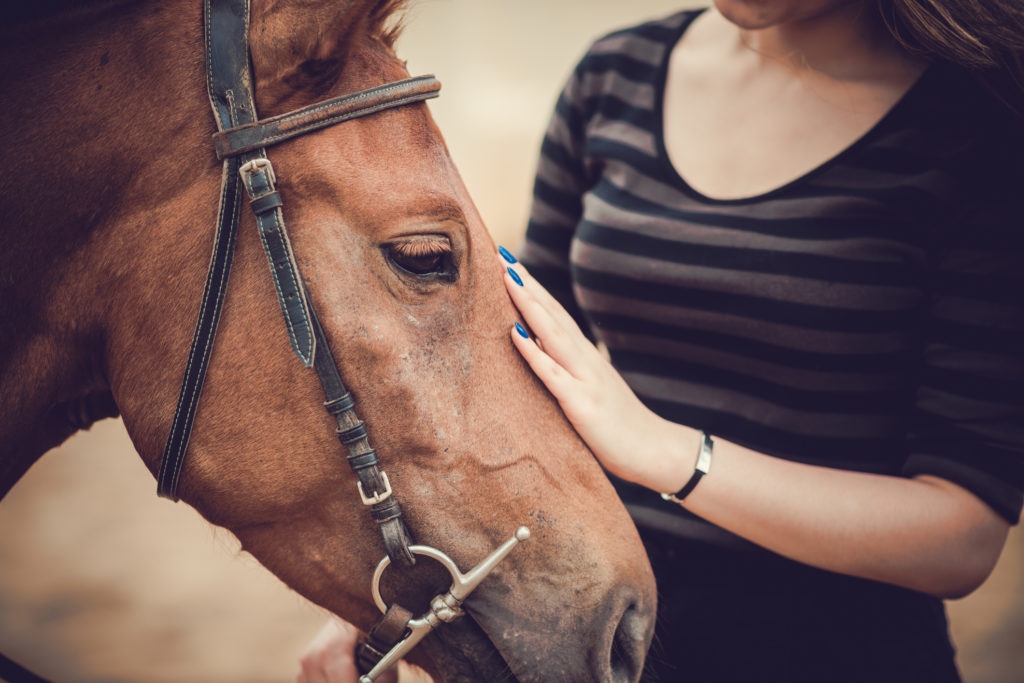Loading a horse trailer for a trail ride can be one of the most dangerous parts of owning a horse.
It is an experience that is often scary, confusing, and disorienting, and that could be said for both horses and horse owners. Injuries to both horses and handlers are possible if the process is mishandled. When a horse loads incorrectly, it can cause dangerous driving conditions during trail ride. (This is one of the reasons you need insurance for horse trailers.)
The problem is not that horses are stupid or panicky, it is that they’re prey animals which means everything in their biological programming is telling them that a dark, confined space is a bad place that they should avoid. That biological programming in prey animals such as horses is the reason that even the most experienced horses and handlers can struggle with the loading process from time to time.
Horse owners should expect some difficulty and lower their expectations. While loading and unloading do get easier over time, it’s never a perfect process and you should expect some hiccups from time to time. Patience is key. Having said all that, just being patient isn’t always the right answer. The right tips can go a long way toward ensuring your horse loads easier, faster, and safer.
Here are six tips that we have found most to be most effective for loading your horse trailer:
1) Get Your Horse More Comfortable Gradually
Often there is a temptation to get the whole loading process done at once.
Remember, this is a new and intimidating process for a horse. In all but a few rare circumstances, it is going to take a gradual buildup. First, open the trailer door and get your horse comfortable around the trailer. Let the horse get curious. Allow your horse to take a step or two into the trailer and back out if they would like.
Instead of leading your horse by the halter, use a lead rope instead. This way you will have more control in the event that it backs away or shies away from the trailer. It’s also worth noting that the handler should not wrap the lead rope tightly around their hand.
Gradually increase the time they can stay on the trailer. Especially if you are working with a scared horse, it is important to have patience and let them get familiar with the trailer. Once they are comfortable staying in the trailer for a minute or two, try using the butt bar. Gradually incorporate securing the butt bar and closing the door. Individually these steps can still be frightening, but can usually be overcome with familiarity and time. Taken together, they will often be overwhelming. So make sure you introduce your horse to the trailer loading process gradually.
2) Reward Each Step
Although positive reinforcement training methods can seem like they’re much more work, but you’ll find that this is one of the best training methods that produce long-term success. The end goal is to have your horse completely loaded and comfortable. There can be a temptation to wait until this process is complete to reward your horse. Some people worry that rewarding intermediary steps will make their horse content to partially complete the process.
But loading a horse is about building trust and familiarity. If you fail to reward your horse for intermediary steps then you are missing out on a chance to build trust and increase their comfort level.
3) Set The Stage
Again, remember that horses are biologically programmed to avoid dark, confined spaces. To them, a horse trailer looks like a cave where they could be trapped by wolves. Anything that makes your trailer seem more open, familiar, and inviting will make the loading process easier.
Initially turn on all the lights and open all the windows. Make the trailer smell as much like a horse as possible by adding some used (but clean) bedding or horse blankets that have been used and have not been washed. Don’t shut the gate after their first attempt at loading. Taken together these steps will make the trailer seem like a more inviting and less hostile space.
4) Give a Good Example
If you are loading more than one horse, start with the more experienced and well-behaved horses.
Their presence will signal to the less experienced, more skittish or scared horses that the trailer is a safe place. Horses are herd animals, so if you start with a problematic horse, their fear is likely to spread to others. Save yourself some headache by letting the good ones lead the way.
5) Practice
If you wait to introduce your horse to a trailer until they need to be moved, you are putting yourself in a very precarious situation.
Some horses need longer than others. Familiarity with a trailer and the process of loading onto it takes time. Additionally, the bumps and speed of a drive are always going to be unfamiliar elements the first time around. They should be totally comfortable standing in a trailer before being asked to deal with these conditions.
6) Listen and Pay Attention
You need to lead your horse, not the other way around.
Having said that, horses are often more tuned into small changes and problems in your trailer than you are. If they are dramatically regressing in their ability to load onto a horse trailer, make sure your tires are all correctly inflated and that the floor is level and secure. Extreme panic on the part of a horse can sometimes be a signal that they are entering conditions that are legitimately unsafe.
If you use all of these steps together, both the loading process and the transport of your horse will be more safely, you will be less likely to need to file a claim for your horse float insurance, and you will be able to load your horse faster.



